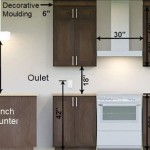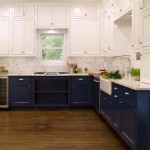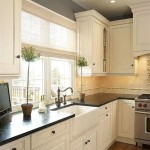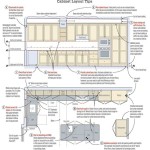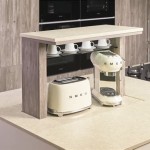Navigating the World of Kitchen Cabinets in Stock: A Comprehensive Guide
Kitchen cabinets are a pivotal element in both the functionality and aesthetic appeal of a kitchen. They provide essential storage space, contribute significantly to the overall design, and influence the value of a home. While custom-built cabinets offer a tailored solution, cabinets held in stock present a readily available alternative with advantages in terms of cost and time efficiency. Understanding the nuances of kitchen cabinets in stock is crucial for anyone undertaking a kitchen renovation or new construction project.
Stock cabinets, also known as ready-to-assemble (RTA) or pre-fabricated cabinets, are pre-made units manufactured in standard sizes and styles. These cabinets are available for immediate purchase and typically come in increments of three inches in width, height, and depth. This standardization allows for mass production, leading to lower costs compared to custom options. However, this standardized approach also means that design flexibility is somewhat limited.
The decision to opt for stock cabinets hinges on several factors, including budget constraints, project timelines, and design preferences. Stock cabinets provide a practical solution for those seeking an affordable and quick kitchen upgrade. However, it is essential to carefully evaluate the available options to ensure they meet the specific needs and aesthetic aspirations of the homeowner.
Understanding the Advantages of Stock Kitchen Cabinets
Stock kitchen cabinets offer several compelling advantages, making them a popular choice for many homeowners. These advantages primarily relate to cost, speed, and accessibility.
One of the most significant benefits is the lower cost. Due to mass production and standardized designs, stock cabinets are considerably more affordable than custom-built cabinets. This cost-effectiveness makes them an attractive option for budget-conscious homeowners or those looking to maximize their return on investment in rental properties.
Speed is another notable advantage. Unlike custom cabinets, which require weeks or even months for design, fabrication, and installation, stock cabinets are readily available. This quick turnaround is particularly beneficial for homeowners facing tight deadlines, such as those remodeling a kitchen before moving into a new home or preparing for upcoming special events.
Finally, accessibility is a key advantage. Stock cabinets are widely available at home improvement stores, online retailers, and kitchen design showrooms. This widespread availability makes it easy for homeowners to compare different styles, finishes, and price points. Furthermore, many retailers offer assembly and installation services, further simplifying the process for homeowners.
Key Considerations When Choosing Stock Cabinets
While stock cabinets offer numerous benefits, it is important to consider several factors before making a purchase. These considerations include quality, sizing limitations, and design constraints.
Quality can vary significantly among different manufacturers of stock cabinets. It is essential to carefully inspect the materials, construction methods, and hardware used in the cabinets. Look for solid wood frames, durable hinges and drawer slides, and well-applied finishes. Avoid cabinets made from particleboard or flimsy materials, as they may not withstand regular use and could require replacement sooner.
Sizing limitations are another important consideration. Because stock cabinets come in standard sizes, it may be necessary to make compromises in the kitchen layout. This is especially true in kitchens with unusual dimensions or architectural features. Carefully measure the kitchen space and plan the layout before purchasing stock cabinets to ensure a proper fit.
Design constraints are inevitable when choosing stock cabinets. The limited range of styles, finishes, and configurations may not perfectly align with the homeowner's desired aesthetic. However, careful planning and the use of creative design solutions, such as decorative hardware, trim, and paint, can help to achieve a customized look.
Choosing the right stock cabinet requires careful consideration of the material used. Particleboard, plywood, and solid wood are the main options. Particleboard is the most affordable but least durable, prone to damage from moisture. Plywood offers better durability and moisture resistance than particleboard, being a common choice for cabinet boxes. Solid wood is the most durable and visually appealing, typically used for cabinet doors and frames. It’s crucial to consider the humidity levels in your kitchen when choosing a material, as temperature fluctuations can impact wood and lead to warping or cracking. Researching the supplier is also critical; look for suppliers with established reputations and positive reviews to ensure consistent quality.
Navigating the Assembly and Installation Process
Stock cabinets typically require assembly and installation, which can be done by the homeowner or a professional installer. Understanding the steps involved and the necessary tools is crucial for a successful outcome.
For ready-to-assemble (RTA) cabinets, assembly is the first step. This involves following the manufacturer's instructions to put together the individual cabinet boxes. A few basic tools, such as a screwdriver, drill, and level, are typically required. It is important to take your time and carefully follow the instructions to avoid mistakes that could compromise the integrity of the cabinet.
Installation is the next step, which involves attaching the assembled cabinets to the kitchen walls. This requires careful planning and precise measurements to ensure that the cabinets are level and properly aligned. Professional installers have the experience and tools necessary to ensure a seamless installation. However, experienced DIYers can often handle the installation themselves, provided they have the necessary skills and equipment.
Before installing any cabinets, confirm the wall structure supporting the cabinets is sound. Locate and mark studs to anchor the cabinets securely, preventing sagging or detachment over time. It's beneficial to use a laser level to ensure that the top and bottom cabinets align perfectly. Incorrect alignment can not only look unprofessional but also impair the functionality of drawers and doors. For upper cabinets, consider using a support system during installation, as this can free your hands and reduce the risk of dropping heavy cabinets.
After the cabinets have been installed, remember to check all doors and drawers for proper alignment and smooth operation. Adjust hinges and drawer slides as needed, according to the manufacturer's instructions, to ensure they close properly and without obstruction. Use shims if necessary to level cabinets when the floor or wall is not perfectly even. Finally, seal any gaps between the cabinets and the wall or floor with caulk for moisture protection and a clean, finished look.
Choosing stock cabinets can be convenient and cost-effective. It’s about weighing the practical aspects against your design needs. The better you evaluate each aspect, the easier it will be to make a decision that suits your lifestyle and budget.

In Stock Cabinets Kitchen Cabinetselect Com

Stock Kitchen Cabinets Cabinet Value

How To Choose Stock Cabinets For Your Kitchen

Stock Cabinets By Metropolitan

Stock Cabinets Heavy Duty Raised Panel Norfolk Kitchen Bath

In Stock Kitchen Cabinets The Home Depot

Stock Cabinets For Kitchens Bathrooms Seifert Kitchen Bath

In Stock Cabinets Kitchen Cabinetselect Com

How To Achieve A Custom Look For Your Stock Kitchen Cabinets

How To Make Stock Kitchen Cabinets Look Custom Extreme
Related Posts


